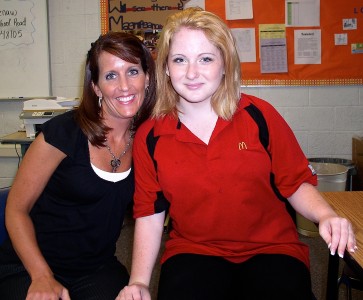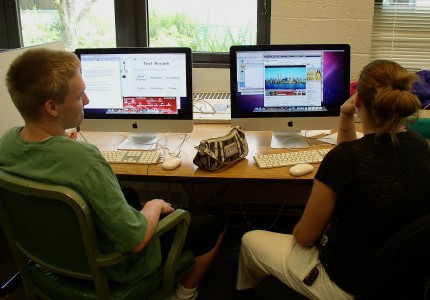By Casey Hans
AAPSNews Service
Ask Debra Destefani what high school program has worked for her. This 17-year-old Pittsfield Township resident has a ready answer.

She is enrolled in the WAY Washtenaw program, a 365-day, online countywide high school program that uses team leaders, mentors, subject experts and regular labs to teach students.
Previously a Community High School student, Destefani said this alternative approach is better suited to her needs, allowing her to do her project-based school work, studying in ways that work for her while she holds down a part-time job.
“I’m self-motivated,” she said. “I think maybe it’s all about mindset and attitude. I guess I can be myself – it allows me to focus on what I like and at the same time get credit for it. I felt like I would get swept away in a crowd (at a traditional school.)”
Widening Advancements for Youth Washtenaw is run through the Washtenaw Intermediate School District, with individual districts participating by purchasing seat time in the program. In its pilot year in 2010-11, the program had 240 students from 10 Washtenaw districts enrolled; in the coming year, it will expand to a full program and add more students, bringing the total served to as many as 420.

There will be only one base lab for the program at Willow Run in the coming year due to budget cutbacks, but labs will also be scheduled regularly at public library sites around the county, including Mallets Creek and downtown Ann Arbor branches to accommodate students here.
The program must follow the same guidelines as traditional high schools in meeting the requirements of the Michigan Merit Curriculum. Team Leader Jennifer Hart – in a role that she said would be comparable to a principal in a traditional high school – said the alternative WAY is challenging.
“Projects are not easy – we want there to be rigor and relevance,” said Hart, a former English teacher and literary coach who oversees Destefani and many of the other Ann Arbor students in the program. “In order to receive a diploma, they have to prove they are proficient in all of the areas to pass.”
Students in the program are referred to as “researchers” and, in addition to team leaders and mentors, there are experts available in key subject areas and technicians who can help with the technical issues learning in an online, computer-based program. Before being accepted into the program, families must apply and home visits are conducted. The program carried a waiting list of students this year.
Hart said Destefani is a great success story of the program. She came into WAY Washtenaw having only earned four credits over two years, which is well below what is needed to graduate over four years. Destefani said she just didn’t go to class and fell behind. WAY Washtenaw has changed her approach and her attitude. She has already finished 6.5 credits since the fall – about one per month – and is moving along in the program so quickly, she will be on target to graduate in December 2012 – the year she would have graduated with her classmates at Community.
Hart said team leaders play many roles: principal, counselor and truant officer, among others. They are responsible for tracking students online and, if they have not logged in and worked in any given day, they are called and, sometimes, get unannounced home visits. Another team leader, Sean Fountain, said he is always on call and more often communicates with his students via cell calls or text messages.
At a recent information session for WAY Washtenaw, parents and students were eager for more information on this alternative program that targets students who either have already dropped out of high school, are at risk of doing so or are attending school but not on track to graduate with their class.
The program generally serves students who are 15 or older, and they must finish the program by Aug. 31 after they turn 20. Students who complete the WAY Washtenaw program receive a diploma from their home districts; this spring, three earned diplomas thanks to this program.
Monique Uzelac, director of instructional technology for the Ann Arbor Public Schools, has been one of the key persons setting up the program at the WISD and was involved with interviewing and hiring staff and interacting with families as they were interviewed to be part of the inaugural program.
She said the program is off to a strong start and gives students a solid approach for achieving the credits they need to graduate. Depending on the topic, in one collaborative project, students can earn credits toward English, social studies and science, for example.
“In Washtenaw County, almost 650 students drop out each year,” Uzelac said. “This program has been successful at pulling students up who are falling behind and becoming discouraged and also at returning students to the classroom who have given up hope.”
And what is Destefani’s future? She loves to write essays and plans to attend college, hoping to follow in her father’s footsteps as a writer and editor.


